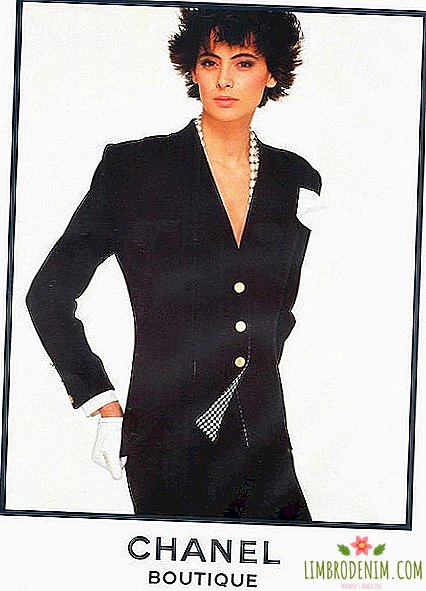Power dressing: What is the problem of the dress code of a "strong woman"
Last week even distant from the fashion world people discussed the article Business of Fashion about "image wars" in politics: referring to an anonymous source, the publication reported that Anna Wintour, editor-in-chief of American Vogue, took up Hillary Clinton's style. Openly supporting the Democratic Party, Wintour is still unlikely to walk around the show rooms herself and collect the bow of his ward every morning - even if he is a US presidential candidate. Most likely, her duties include some general recommendations and specific consultations before major events.
But this should not be underestimated: if Hillary wins and becomes the first woman - the president of the United States, this will be the merit of the editor-in-chief of Vogue. Why? During the pre-election race, special attention is riveted to her - future voters pay attention not only to statements about economic reforms, but also to how she moves, how she eats and, of course, how she dresses. The president is also elected by the way he looks - and, admittedly, in our world, especially if it is she.

Power dressing sought to eliminate any hint of femininity, which, following the cliché, was associated with gentleness and weakness
The almost forgotten concept of power dressing, that is, the manner of dressing, emphasizing such features as strength, decisiveness and imperiousness, has not been fashionable criticism for a long time. But the current political campaign of Clinton with his whole appearance says that it's time to remember him. Power dressing (let's agree that there is no adequate Russian-language term for this - for a number of reasons) originated in the West in the late 70s and early 80s. That is, at a time when it was especially important for women to prove their competence in politics and business, in areas traditionally occupied by men. Pencil skirts, wide trousers and, of course, large jackets with shoulder pads - this all refers to the concept of power dressing. Strict lines, silhouettes, borrowed from the men's wardrobe, all shades of gray, cell-tartan, costume strip - all in order to take women seriously.
Power dressing sought to eliminate any hint of femininity, which, following the cliché, was associated with gentleness and weakness. Even a romantic style blouse was invented to be worn with a tie. The heroine Joan Harris from Mad Men has been subjected to gender-based harassment and insults more than once, but she ended up with her boat shoes and colorful sheath dresses. But if the action of the series ended not in 1970, but a decade later, the creators of the series would surely force her to change into something more masculine.
The roots of power dressing go back to the 20s, and the woman who played an important role in its development (and not only in it), - Gabrielle Chanel. Her two of a narrow midi skirt and a jacket without a collar is actually the first "business woman's dress." It included the masculine elements, while it was extremely convenient for that time, as it did not constrain movements, like the rest of the clothes. Innovation, the uniqueness of the costume was that it was deliberately designed to a rapidly changing lifestyle of women. After World War I, they slowly but surely began to take up "male" positions and were forced to prove their right not only to equal duties, but also to equal trust and respect.


It is not surprising that women politicians became the main figures in power dressing - that is, women in the most "serious" positions in the world, from Margaret Thatcher to Angela Merkel. But behind them were millions of no less strong-willed women who chose a career. The style went to the masses - it is worth taking a look at the fashionable footage of the yuppie era, at least for TV shows like "Dallas" and "Dynasty", at least for modern shows about "strong women" - "The Good Wife" or "House of Cards". The classic women's business suit has undergone not too strong changes: a strict line of shoulders has gone, a variety of models of trousers have come into fashion. Pantyhose - at any time of the year - and heels, symbolizing severity and concentration, remained unchanged elements of the corporate dress code. But with this, women are trying to fight. There is a reason.
Actually, the heroine of the "House of Cards" Claire Underwood, in a sense, keeps up with Hillary Clinton: she is also closely involved in the role of the first lady and she also has no doubt that she is worthy of the presidency. Claire Robin Wright played showed what could be the icon of business style in 2016, or rather what it should be. "She makes a salad at home at eleven o'clock in the evening on heels-stilettos and a strict suit - DOES IT HAVE ANY MEANING AT ALL?" - The Telegraph journalist puzzled. I want to answer - no, but in fact, the costume designers of the show create with the help of dresses-cases and jackets the image of a woman who does not relax even behind the closed doors of his house. To some extent, the series not only state, but also encourage the dress code; they broadcast the idea: "The ideal woman applying for a serious position looks like this." But is it necessary to stand firmly in heels to rule the state?
Today, women should not worry and think before work: if the length of my skirt is optimal, if my shirt is not too bright, if my shoes will not be pressed during the meeting. At a time when the concepts of the dress code are becoming blurred, everywhere, except for giant conservative companies that are hard on any changes, the efficiency of a person’s work should not be related to his appearance. Yes, style can be a powerful tool - but for others to believe in you, you don’t need to wear a two-piece suit. Only if you like it yourself.

"Power style" today is needed for those who have to prove their right to a "male" position
So it turns out that the only ones who really need to adopt the power dressing style today are those who have to prove that they deserve this position no less than men. For example, Claire Underwood and Hillary Clinton. Being restrained, elegant, staking on the classics - these were the first ladies of the United States. They were supposed to embody sleekness and maintain the image of an ideal wife: ornaments and supports. And even Hillary Clinton, who pushed for a successful political career before marriage (it is worth remembering that during the 1992 election, the Clintons went under the slogan “Two for the price of one”), during the reign of her husband, she was not particularly prominent in a number of other wives of American presidents. Do you remember how she looked in the 90s?
Actors, athletes, pop stars, politicians - every public person has his own stylist, but the political arena is connected in this regard with a specific set of tasks. And considering that a woman now has a serious chance to become the president of the United States for the first time, there are even more of them. Hillary Clinton should embody openness and confidence, but not wear prohibitively expensive things (like her Armani jacket for 12 thousand dollars, which has become a meme), be strict, but not old-fashioned; and also - dress on the occasion and take into account the tasks. In fact, a woman again has to think too much about choosing clothes, while male politicians are only talking about the color of their tie. Clothing continues to be a "statemen": during a speech at the National Congress of the Democratic Party on Hillary Clinton was a white suit - her message was immediately considered by the press as a reference to the outfits of the first suffragists who fought for equality.
Constants Hillary - bright trouser suits, rich colors, materials that keep their shape well: vivid, memorable, but moderately conservative. Step forward, but very, very thoughtful. And future elections are not only the possible victory of one independent woman who has been going for this for forty years. This is proof that a woman still needs to think about how her style and color of her jacket will affect voters. And when we do not have to play on this field - perhaps this will be the power dressing of the future.
Photo: Hillary Clinton / Facebook, Chanel, Netflix





